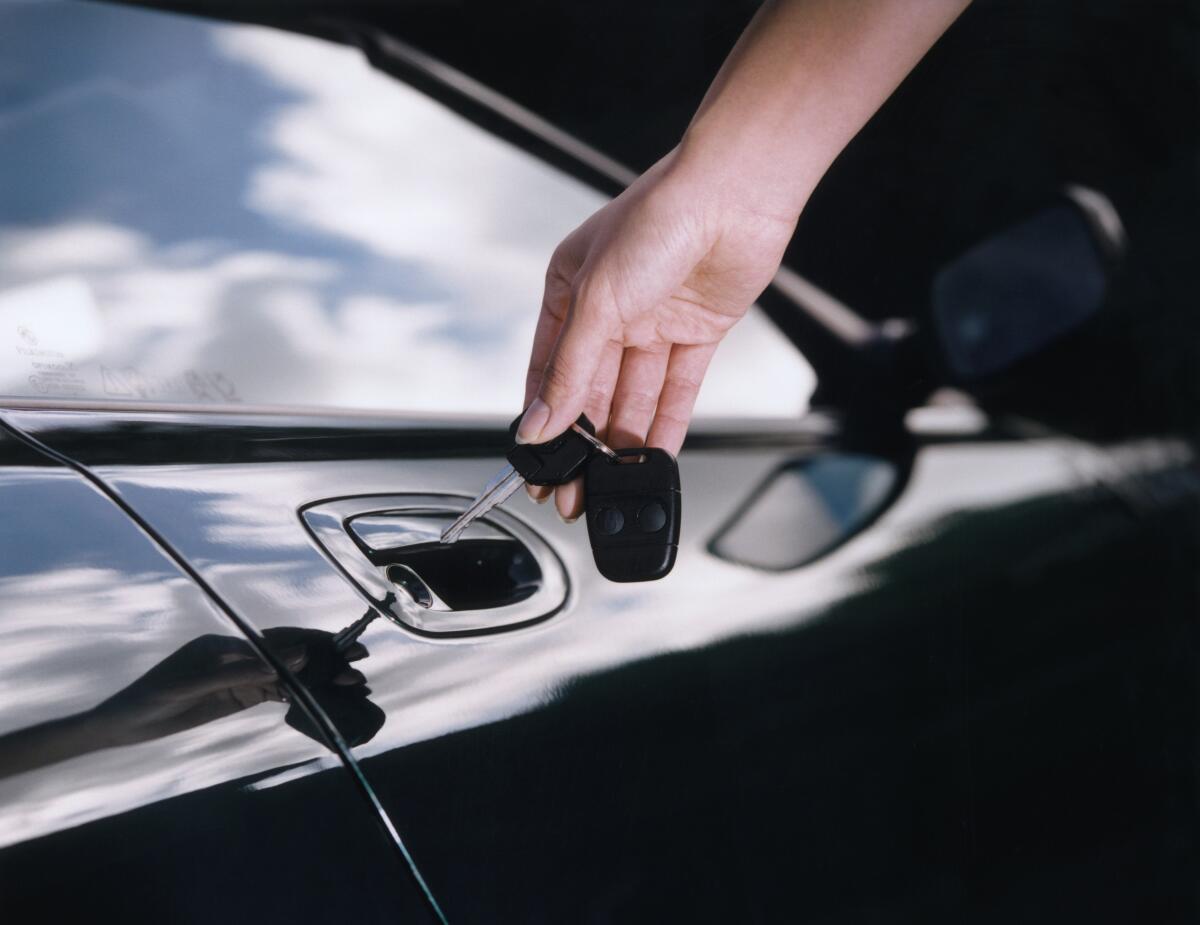How to make your car pay for itself

Cars normally cost money. However, an increasing number of entrepreneurial vehicle owners are making their cars earn their keep.
Consider Saimah Chaudhry, 31, who first listed her Smart car for rent on peer-to-peer car sharing platform Turo seven years ago. At the time, she had a tech job that allowed her to work at home, so she didn’t mind being without wheels. She paid $99 per month to lease the car. And she received $600 to $700 per month by renting it out to tourists.
“The math on that was pretty good,” says Chaudhry, who now has a YouTube channel about finding success with your own car rental business. She leased more cars and listed them for rent.
Ditched the day job
She’s since ditched her day job and rents out cars full time. Her fleet, which started with just Smart cars, now includes luxury vehicles and convertibles. She estimates that she earns about $250,000 annually with her one-woman operation.
Stephen Alvarez, 24, does much the same thing.
At first, the New York resident just wanted to buy an expensive Dodge Durango. Since it cost $817 per month to lease it, he thought he’d defray the cost by renting it out to other New Yorkers who wanted to get away for the weekend. But in an average month, the car brought in two to three times the lease payment. Alvarez leased more cars.
His DNCD Group now manages a rental fleet of more than 100 vehicles in New York and New Jersey. The operation is so busy that he’s hired a team of workers to help clean, repair and deliver the cars to customers. Alvarez estimates that he clears $300,000 to $400,000 annually.
Making cars earn their keep
Turo, which is the largest peer-to-peer car sharing marketplace, says the average car listed on its platform earns $10,516 annually. Given that the average auto lease payment is $531 per month, or $6,372 a year, it’s pretty easy to make a car earn its keep by renting it out here.
But if you want to keep your risks low and profits high, there are some tricks to doing it right.
Examine the cost-reward
If you have an existing vehicle that you don’t use much, the math is pretty simple. Can you rent it out for an amount that makes sense given the time and inconvenience of getting your car to renters, keeping it clean and in good repair? If renting your car out for a few days a month is likely to provide a reasonable return for your time, it’s clearly a win.
While there are many types of summer jobs, arguably the most attractive are in camps, resorts and hotels.
However, if you need to buy a car in order to rent it, the math gets trickier. Now you have to see if your potential rental income can more than cover the cost of the new car payments on a no-money-down loan. Naturally, the car payment is a sure thing. The potential income is not. So, calculate both the best- and worst-case scenarios before you take the plunge.
Estimate earnings
How do you know how much you can earn with your car? Car rental prices vary dramatically by city, car and time of year. But you can estimate your income potential by looking at cars similar to yours that are listed for rent in your city. It’s wise to check both traditional rental platforms, such as Hertz and Avis, as well as the Turo platform.
Why both? Turo offers greater detail about the privately owned vehicles for rent near you. So, while a listing at Hertz might promise a “midsize sedan” or a seven-seat SUV, listings on Turo include car make, model and year. For instance, a 2018 Chevy Suburban was recently listed for rent at $68 a day in Los Angeles. New Tesla Model 3s were listed for $71 a day in New York.
Account for fees
Realize, however, that the car owner gets only a portion — between 60% and 85% — of the rental price. The rest is paid to the Turo platform in commissions and fees. (More on this below.) So, assuming that the Suburban is rented out 10 days a month, it would bring in between $408 and $578 in monthly income to its owner.
Notably, there are several other peer-to-peer car rental platforms, including HyreCar and GetAround. However, SideHusl.com does not recommend them because insurance limitations or technology problems have led to miserable experiences for car owners.
Manage risk
Accidents happen. And the more often your car is rented out, the more likely it will be involved in an accident at some point. All vehicles listed on Turo are required to have at least the minimum personal insurance coverage required by the owner’s state. But traditional auto insurance policies do not cover losses when your car is being used for commercial purposes.
That means you need separate commercial liability coverage, too. Turo provides several options for owners, including a no-deductible policy that even pays for your vehicle’s down time when it’s getting repaired. If you choose this policy, Turo will take a 40% commission on your rentals. The site also offers less comprehensive coverage, which would reduce Turo’s commission to 15% or 20% of the rental amount. However, the cheaper policies have deductibles that you would have to shoulder in the event of an accident. They also don’t pay you for the loss of use of your car.
Consider logistics
Renting a car out to others creates a cascade of little tasks that need to be accomplished regularly. Cleaning, inspecting for damage, regular maintenance, filling the car with gas — these are all jobs that are required after each rental, notes Alvarez. If your favorite repair shop, car wash and gas stations are far from where the car is housed, logistic delays can cost you both time and money, he says.
Before you launch a rental operation, he suggests you find nearby vendors for all your regular auto maintenance.
Adapt to your market
Both Alvarez and Chaudhry started out renting cars that they owned and liked. However, as they built their rental businesses, they started asking customers about the type of cars they’d like to rent. In both cases, they expanded out to add luxury vehicles. Some customers gravitate to peer-to-peer platforms specifically because they can rent automobiles that will deliver an “experience,” not just transportation, they explained. These cars can also be rented for higher prices.
However, the practicalities of your marketplace are also important. Alvarez doesn’t buy convertibles because East Coast weather leaves them unrented for most of the winter. Chaudhry, on the other hand, finds that luxury convertibles are just the ticket in her Southern California rental market. Meanwhile, a couple in Denver rents only Jeeps, which are perfect for visitors to head to the many ski areas served by the Denver airport.
Pricing is key
One of the reasons peer-to-peer rental marketplaces are able to draw customers is because they often charge less for the same — or nicer — vehicles than traditional rental marketplaces. If you wanted to rent a Tesla Model 3 from Hertz in Los Angeles, for instance, you’d pay $145 a day. On Turo, you could find roughly the same car for $88.
Seasoned car hosts like Alvarez and Chaudhry say they pay attention to what similar cars are renting for with both big and smaller luxury car rental firms. They then price their rentals at a touch below the average. That helps attract loyal customers and keep their cars booked. Alvarez says this strategy keeps his fleet almost fully booked, with rentals averaging 27 or 28 days each month.
Kristof is the editor of SideHusl.com, an independent website that reviews moneymaking opportunities in the gig economy.
More to Read
Inside the business of entertainment
The Wide Shot brings you news, analysis and insights on everything from streaming wars to production — and what it all means for the future.
You may occasionally receive promotional content from the Los Angeles Times.











